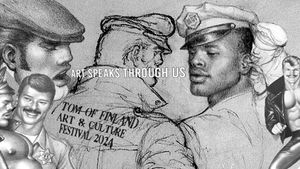The classical civilizations of ancient Greece and Rome didn't cast the same condemnation upon same-sex relationships that their Christian descendants later would. But records of these LGBT romances survived homophobic revisionists and still stand as celebrations of the original Greek (and Roman) love. 1. Hadrian and Antinous
1. Hadrian and Antinous
Roman Emperor Hadrian fell in love with the Bythinian peasant boy Antinous after meeting him around the year 123. The child was sent to Rome and would eventually travel the Mediterranean with the conqueror. Historian Roystan Lambert wrote in a book on the pair that Hadrian, at age 48, was in an unhappy marriage to Sabina and also lacked interest in other women. Then he fell for the teenager, who became a favorite companion. The two would travel the world from Athens to Antioch to Alexandria, hunting game together. But while sailing the Nile, Antinous would fall into the river and die. While his death remained a subject of mystery, Hadrian deified the lad, and a cult sprang up that honored Antinous as a god. 2. Catullus and Juventius
2. Catullus and Juventius
While the affair between Catullus and the female Lesbia dominated much of the Roman poet's work, he proved he was smitten with the young man Juventius as well. A series of poems about Catullus' gay love affairs has drawn more attention in contemporary times; some of it gets outright vulgar. But in his earliest writings about Juventius, Catullus brings his timeless tenderness to the page as he revels in the "harvest of our kissing" with his male lover. 3. Nisus and Euryalus
3. Nisus and Euryalus
The love story of these two Roman soldiers appeared in Book 5 of the Aeneid, where the latter was described as a "boy of blooming years" and the former as "swift" and "eager." The relationship, described by Virgil as a pious love, gets explored in full in Book 9, where it also comes to a tragic end. The two had volunteered to raid an enemy camp. But while Nisus escapes alive, Euryalus is captured. Nisus returns to save his lover, but both men are killed, and their heads are later displayed on spikes. 4. Elagabalus and Hierocles
4. Elagabalus and Hierocles
Sex scandals rocked the reign of Roman emperor Elagabalus, but none may have been so revealing as his relationship with his charioteer, Hierocles. As documented in the Augustan History, the likely transgender emperor would refer to himself as the wife and queen of Hierocles, a rather scandalous notion, just for the fact that his male lover was a slave. The historian Cassius Dio wrote that the emperor even sought out a physician who could replace his genitalia with female anatomy. But Elagabalus' curious eccentricities seeded doubt in the Praetorian Guard, who eventually assassinated the leader and killed those close to him, including Hierocles. 5. Julius Caesar and Nicomedes
5. Julius Caesar and Nicomedes
The most famous emperor in Roman history was rumored to have a same-sex affair with King Nicomedes IV of Bythinia, according to Suetonius. While still a young man under the training of M. Minucius Thermus, Julius was sent to see Nicomedes and reportedly spent an extended period there. He returned after a mission with Thermus concluded. News of a possible tryst would be used against Julius for years by enemies including Cicero, Licinius Calvus, and Bibulus. Could the story have simply been invented by rivals? Perhaps, but in the least, a political relationship between the two rulers would endure. 6. Megillus and Leaena
6. Megillus and Leaena
Born Megilla, this gender-defiant girl from Lesbos shaved her head and took on the identity of a man, in a tale related in the Dialogues of the Courtesans.The story was recounted by onetime hookup Leaena, who approached the presenting-as-male Megillus seeking stories of the women of Lesbos, including those who reportedly looked and loved like men. Megillus was reportedly married at the time to Demonassa of Corynth and made clear he identified as male before seducing Leaena. "I threw my arms around her as though she were a man, and she went to work, kissing me, and panting, and apparently enjoying herself immensely," Leaena related. When pressed, she offered no more detail of the deed. 7. Alexander the Great and Hephaestion
7. Alexander the Great and Hephaestion
Alexander III, the famed king of Macedon, quite likely maintained a gay relationship with his general Hephaestion. As historian David Lane Fox wroten "Alexander was only defeated once, the Cynic philosophers said long after his death, and that was by Hephaestion's thighs." The matter remains the subject of scholarly debate, but at the very least, the two men shared a connection far greater than Alexander had with any other officer. Aristotle would describe the two men as "one soul abiding in two bodies." 8. Socrates and Phaedo
8. Socrates and Phaedo
Plato's writings reveal that his famous teacher Socrates enjoyed a string of love affairs with younger men. But it was the last of these May-December romances that would be documented in touching detail in Phaedo. In the document of Socrates' final days before his execution, the young Phaedo describes his interaction with the great philosopher. It wasn't a vividly sexual tale but one of intimacy and reflection. In one passage, Socrates runs his hands through his lover's hair, asking if he will cut it after Socrates dies, then advising him not to do so. 9. The Sacred Band of Thebes (or Epaminondas and Pelopidas)
9. The Sacred Band of Thebes (or Epaminondas and Pelopidas)
Plutarch wrote about the heroism of this military battalion from Thebes, a group of about 150 same-sex couples fighting side by side as soldiers. Indeed, two of the most famed generals of their day, Epaminondas and Pelopidas, were lovers who fought with this famous band of gay warriors. Historians wrote of the incredible fighting prowess of the battalion, something Plutarch credits to the desire of soldiers to protect and, more important, to impress their lovers. The force was undefeated for many years before ultimately falling at the Battle of Chaeroneia. 10. Sappho and her hetaera
10. Sappho and her hetaera
Perhaps the most important lesbian poet of all time, Sappho, taught young women on the island of Lesbos. But she also kept lovers through the years, which were referred to in her verse as hetaera. Whether because of the scandal and secrecy, or relationships, or simply because she was unlucky in love, the names of her female paramours cannot be found in Sappho's surviving verse. What has endured is the vivid memory of her love affairs. She is regarded as one of the nine great lyric poets of the era, and her steamy writings secure her place in the literary pantheon. 11. Pindar and Theoxenus
11. Pindar and Theoxenus
The most famous love poem written by Pindar to declare his love for the young Theoxenus was described by gay rights scholar Magnus Hirschfeld as "one of the most perfect love songs in the Greek language." Pindar tells how the son of Hagesilas could make him "melt like the wax of holy bees stung by the sun's heat." 12. Zeno and Persaeus
12. Zeno and Persaeus
Regarded as the father of stoicism, Zeno of Citium by all accounts preferred the company of men. He lived for many years with Persaeus, who first came to Zeno as a slave but would later become his favorite student and his lover. When an aging Zeno declined an invitation to serve as a member of the Macedonian Court, he sent Persaeus in his stead. 13. Orestes and Pylades
13. Orestes and Pylades
The relationship between these two men was celebrated by Greek scholars as a tale of the wonder of homoerotic romance. Orestes was regarded as the hero of the Oresteia Cycle, and Pylades was his warrior lover. In Lucian's Erotes, the tragic conclusion to the love affair is told when the two men were in a battle together; it was decided one had to take a message to Mycenae while the other stayed back, likely to be killed. The older Orestes sent Pylades outward, declaring the younger man more fit for the mission, while he stayed behind to die. The romance would be further immortalized years later in Handel's opera L'Oreste. 14. Harmodius and Aristogeiton
14. Harmodius and Aristogeiton
The two Athenian lovers became revered as symbols of democracy after they overthrew the tyrant Hippias and his brother Hipparchus, as documented by Thucydides. The tale goes that Harmodius rejected advances by Hipparchus, so the ruler besmirched the reputation of Harmodius' sister. This led Harmodius and his lover Aristogeiton to plot an assassination of the ruler. The effort wasn't immediately successful, however. While Hipparchus was killed, Harmodius was speared and felled by a guard. Aristogeiton was captured and tortured to death, which was personally overseen by Hippias. But the lovers' sacrifice would lead to the overthrow of Hippias and the establishment of democracy in Athens. 15. Agathan and Pausanias
15. Agathan and Pausanias
By many accounts, the tragic poet Agathan was the Andy Warhol of his day, a flamboyant artist who would gather the great minds of Athens in his home. Most famously, Plato's Symosium took place at one of Agathan's dinner parties. He lived with longtime lover Pausanias, who was quoted extensively on the subject of homosexual desire in Plato's work.
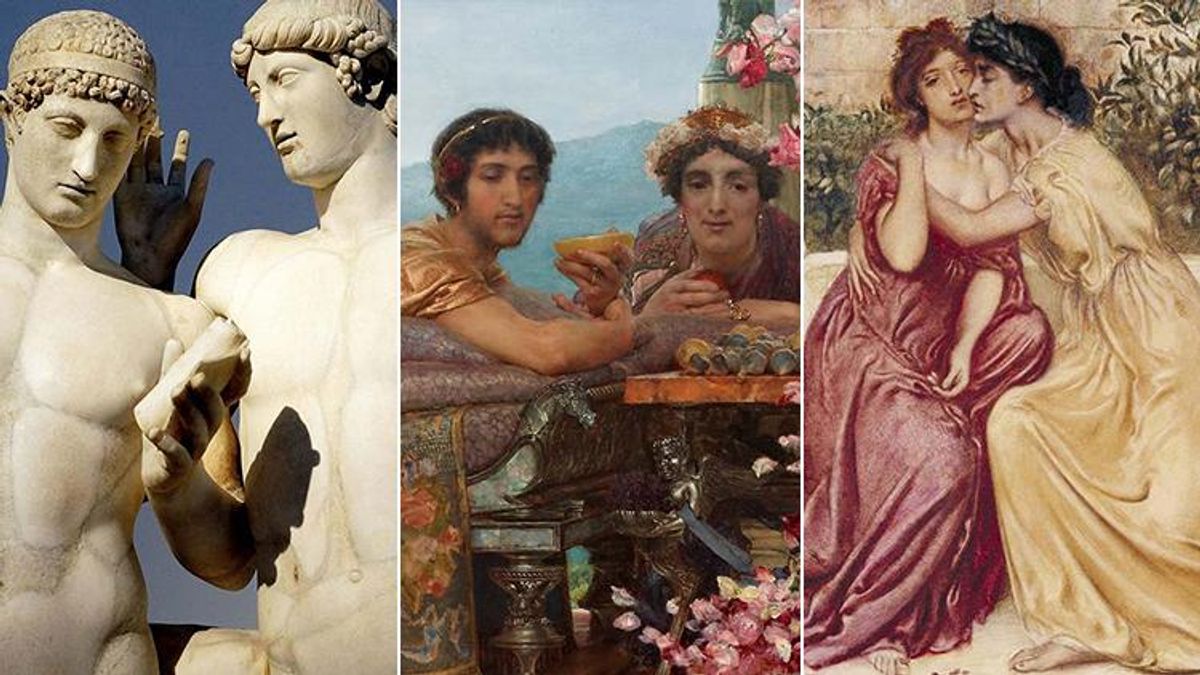

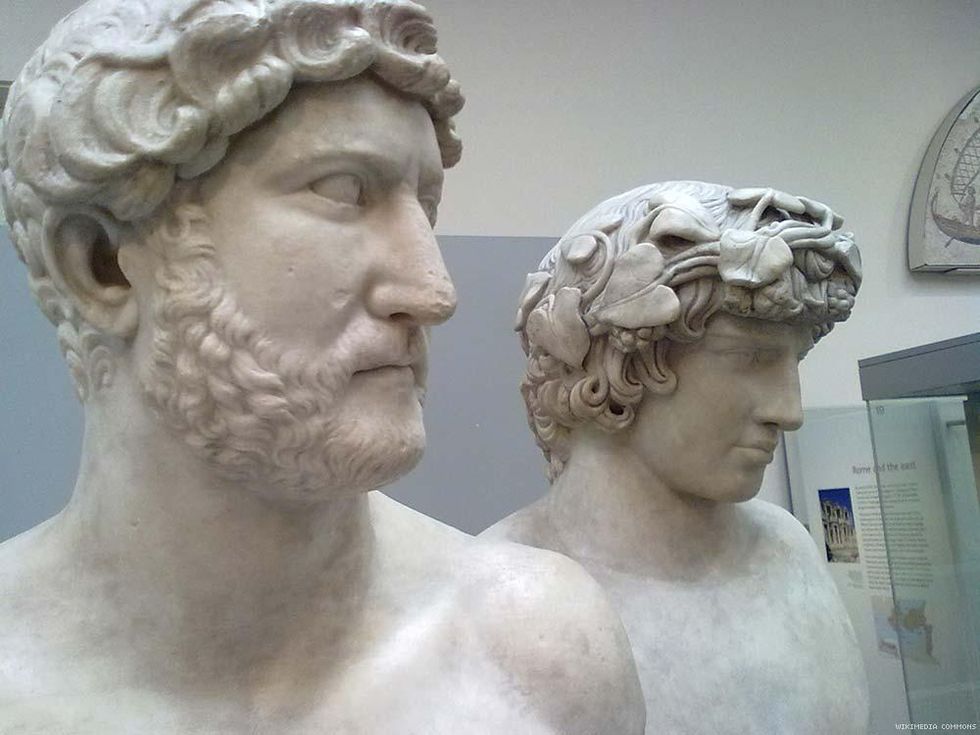 1. Hadrian and Antinous
1. Hadrian and Antinous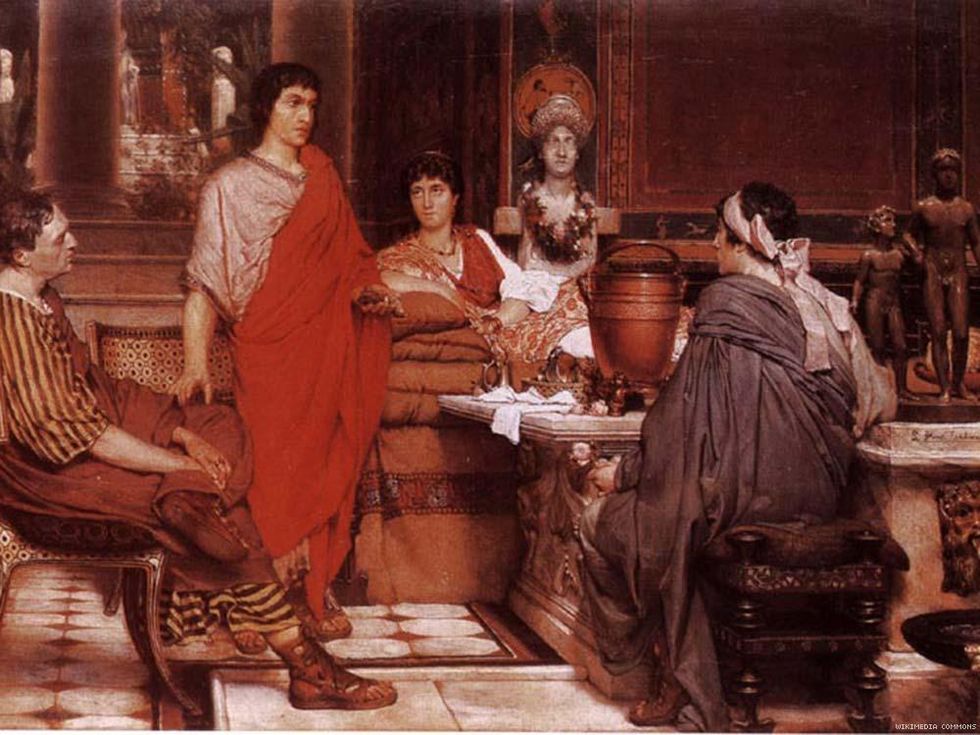 2. Catullus and Juventius
2. Catullus and Juventius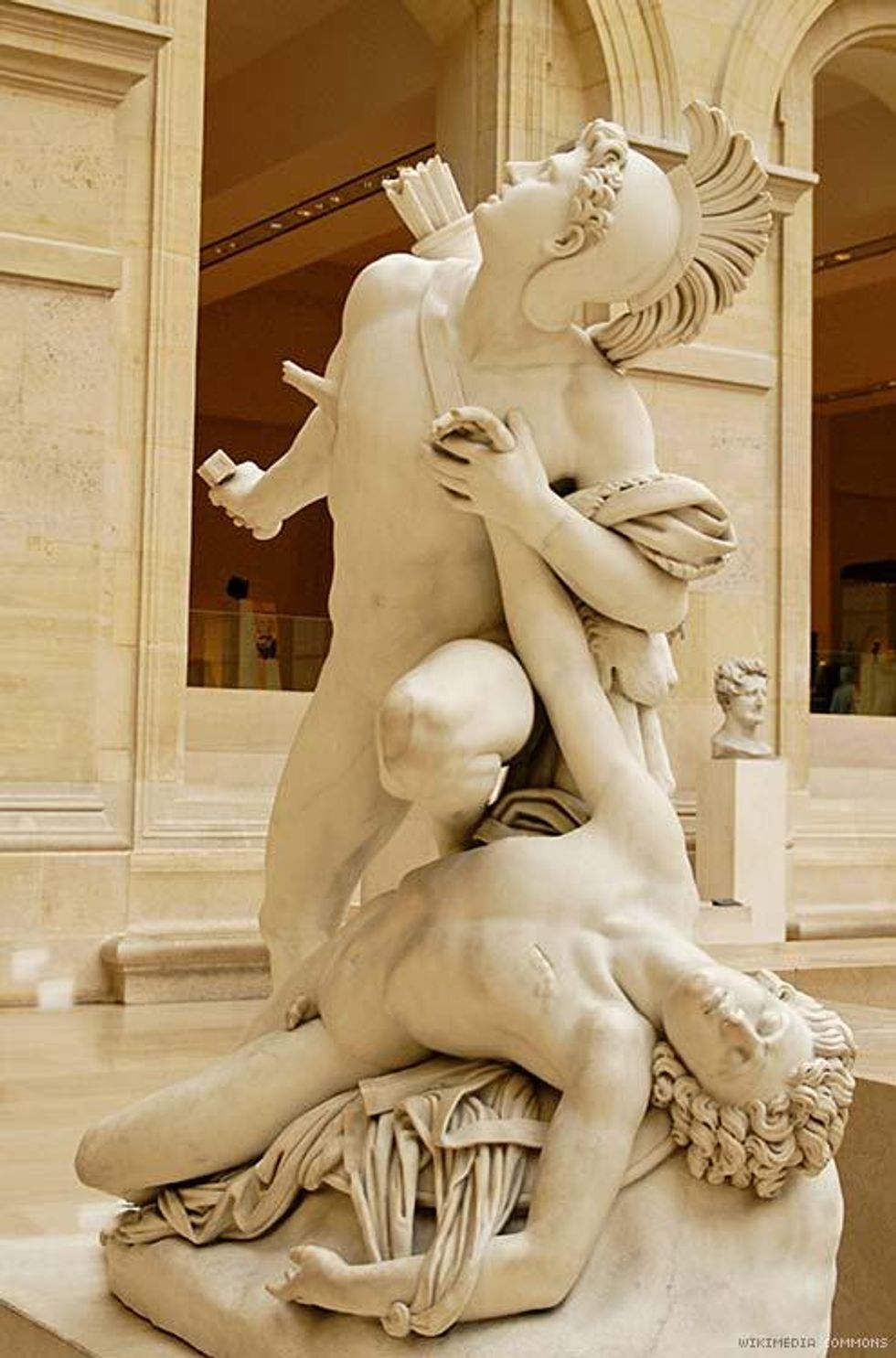 3. Nisus and Euryalus
3. Nisus and Euryalus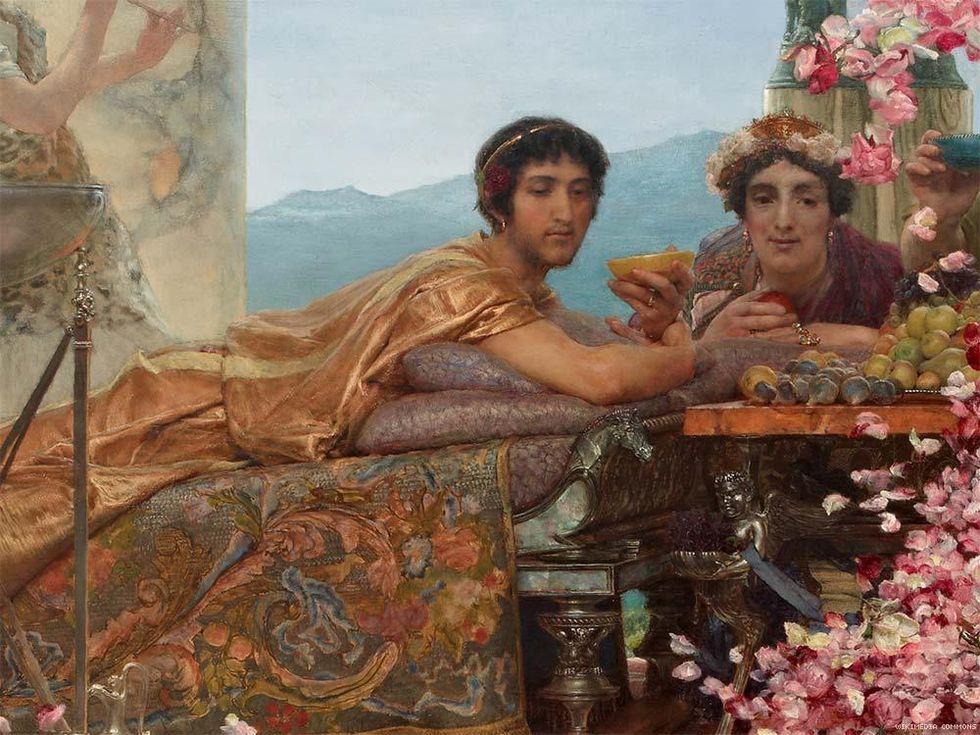 4. Elagabalus and Hierocles
4. Elagabalus and Hierocles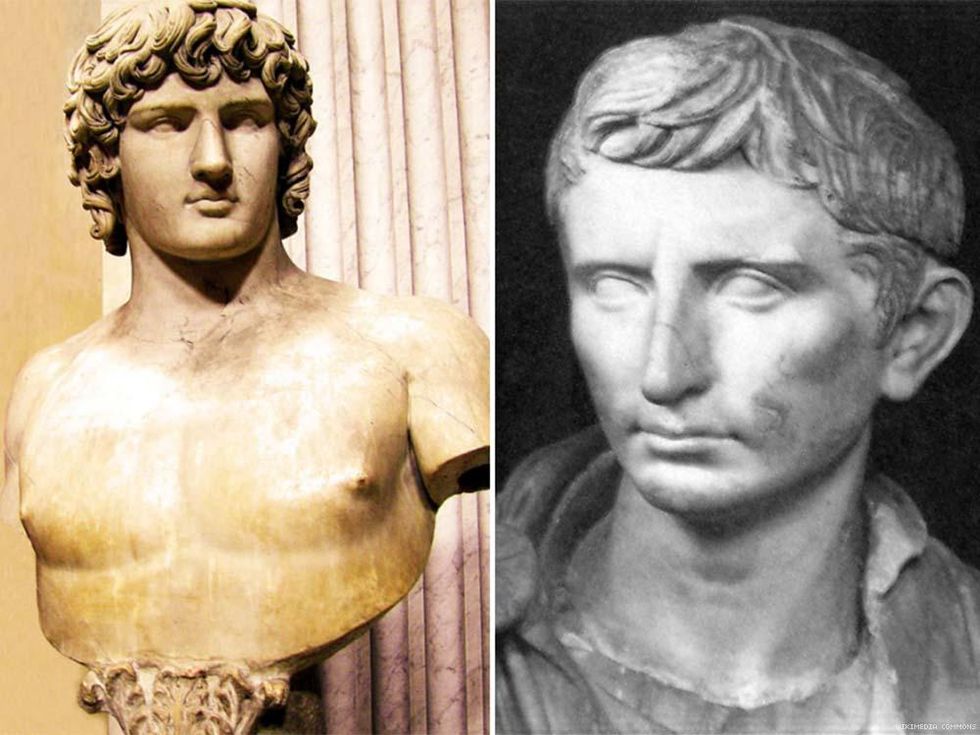 5. Julius Caesar and Nicomedes
5. Julius Caesar and Nicomedes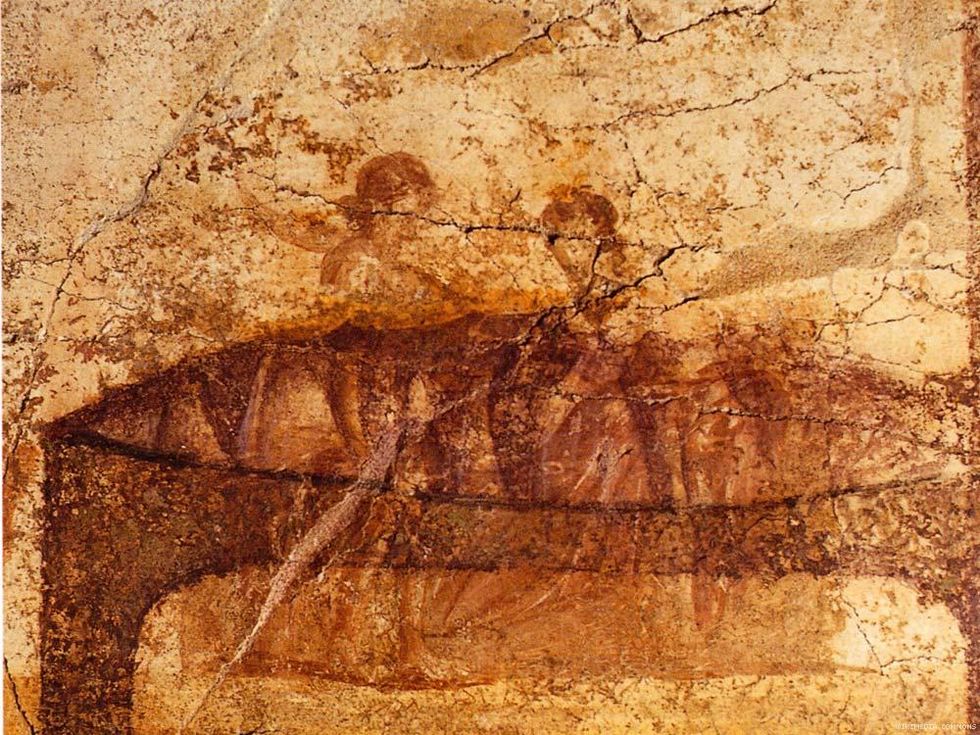 6. Megillus and Leaena
6. Megillus and Leaena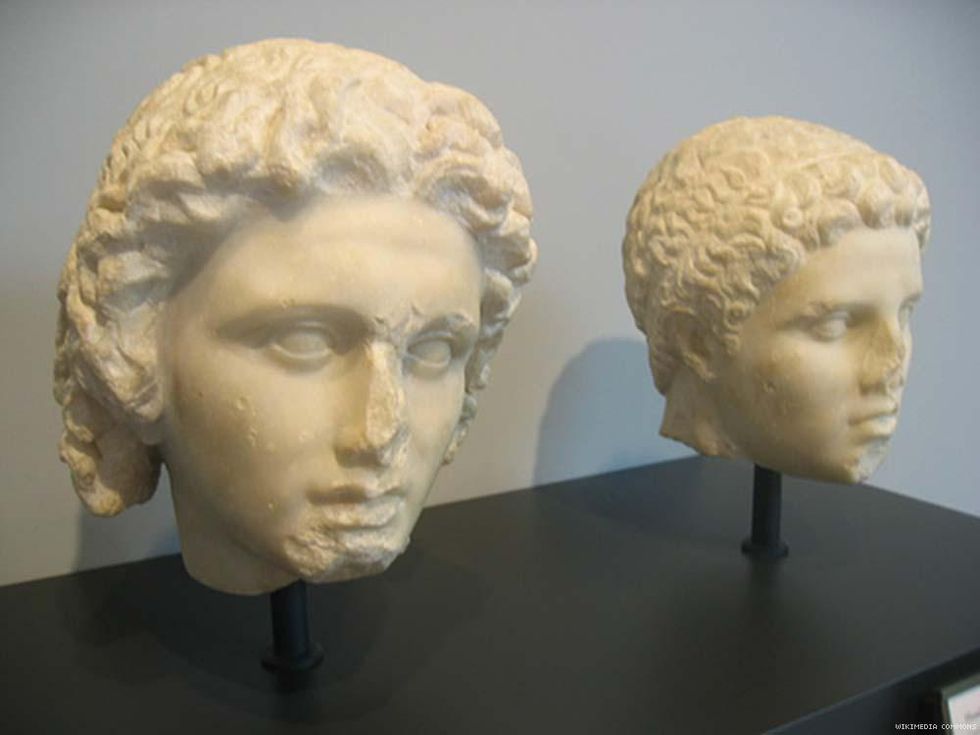 7. Alexander the Great and Hephaestion
7. Alexander the Great and Hephaestion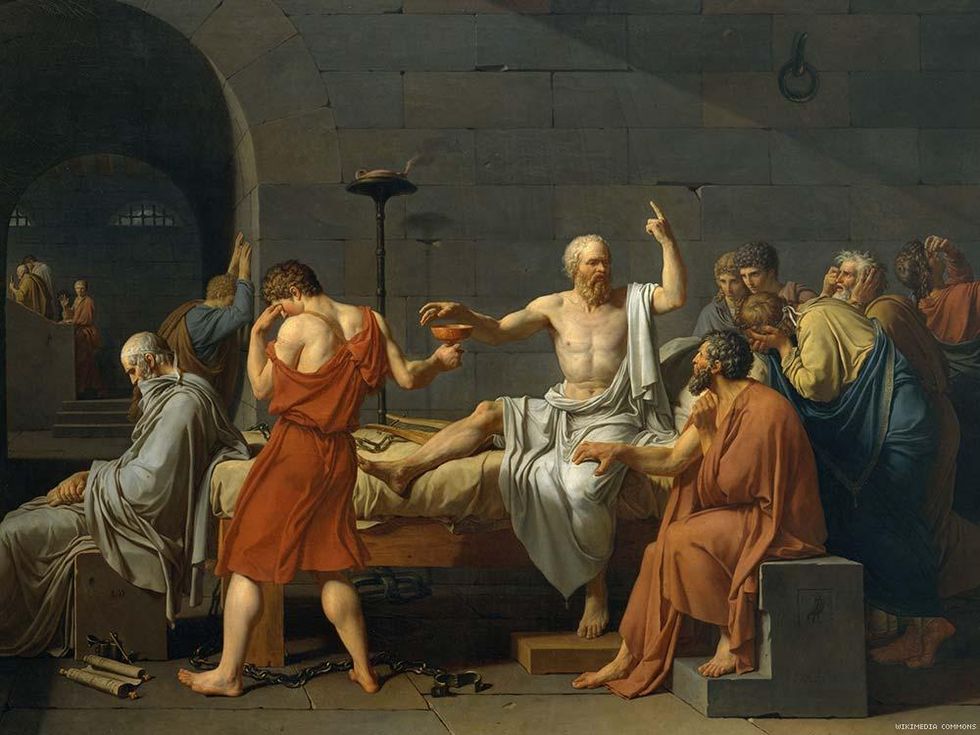 8. Socrates and Phaedo
8. Socrates and Phaedo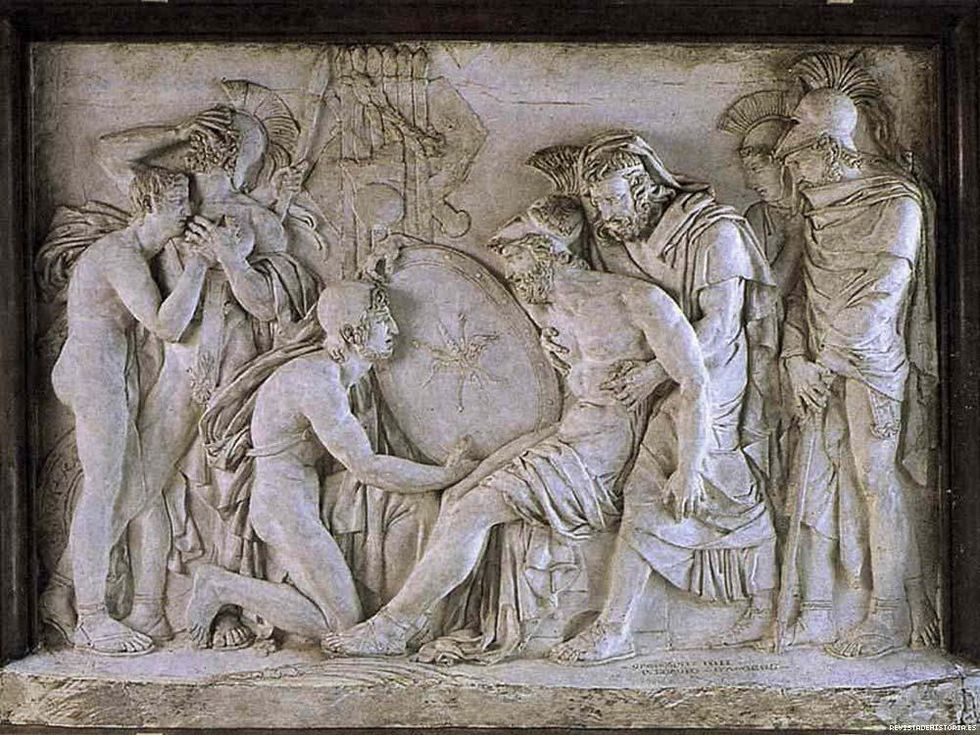 9. The Sacred Band of Thebes (or Epaminondas and Pelopidas)
9. The Sacred Band of Thebes (or Epaminondas and Pelopidas)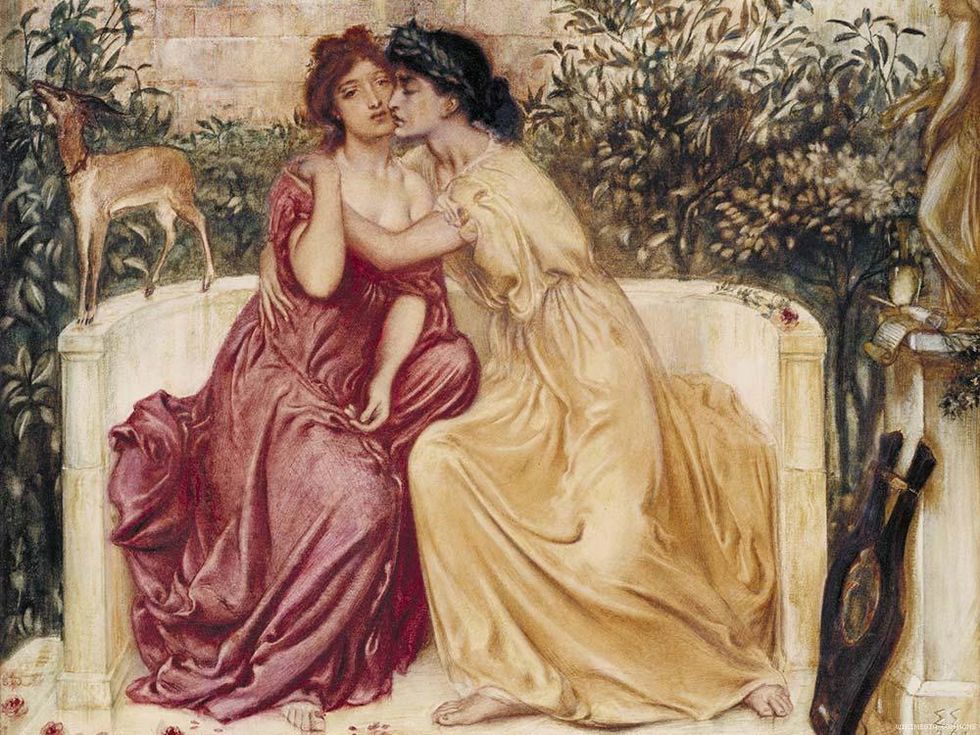 10. Sappho and her hetaera
10. Sappho and her hetaera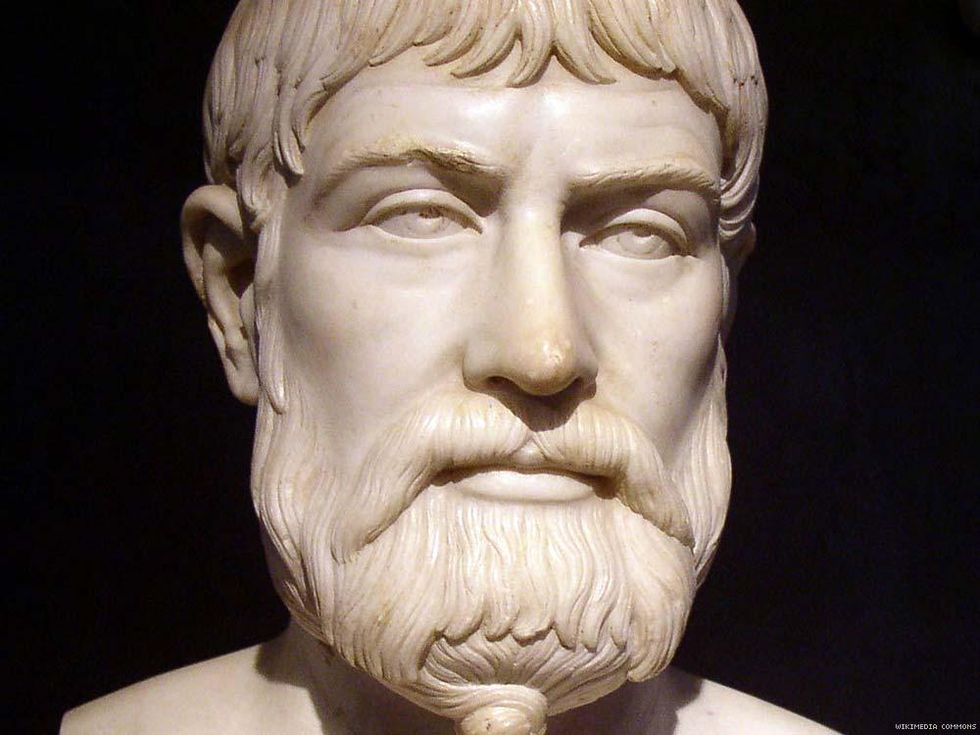 11. Pindar and Theoxenus
11. Pindar and Theoxenus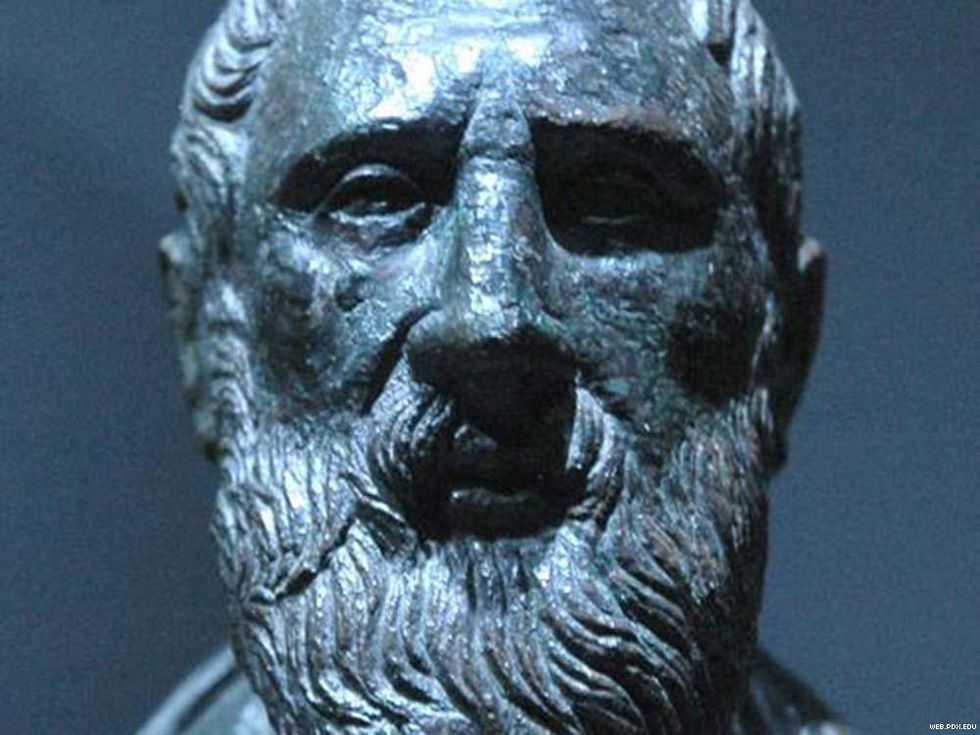 12. Zeno and Persaeus
12. Zeno and Persaeus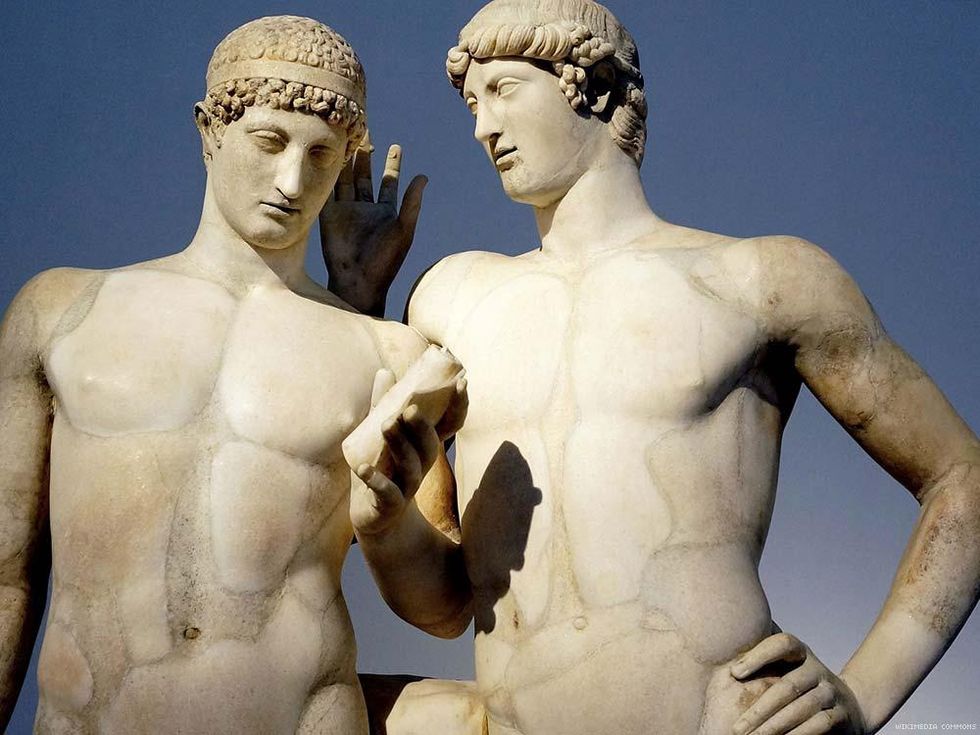 13. Orestes and Pylades
13. Orestes and Pylades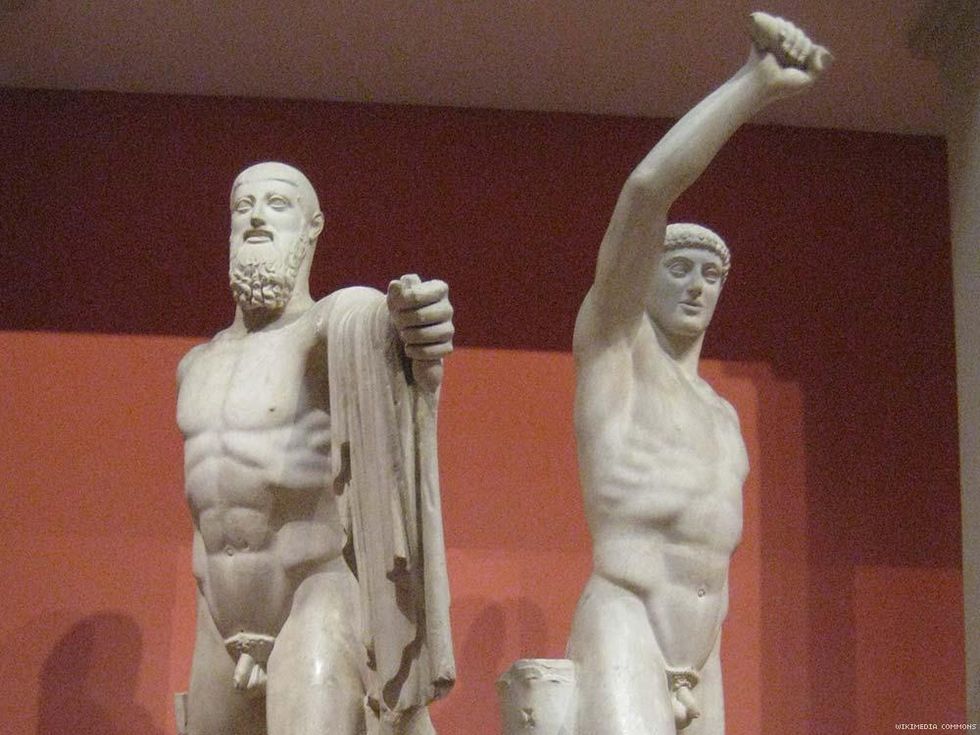 14. Harmodius and Aristogeiton
14. Harmodius and Aristogeiton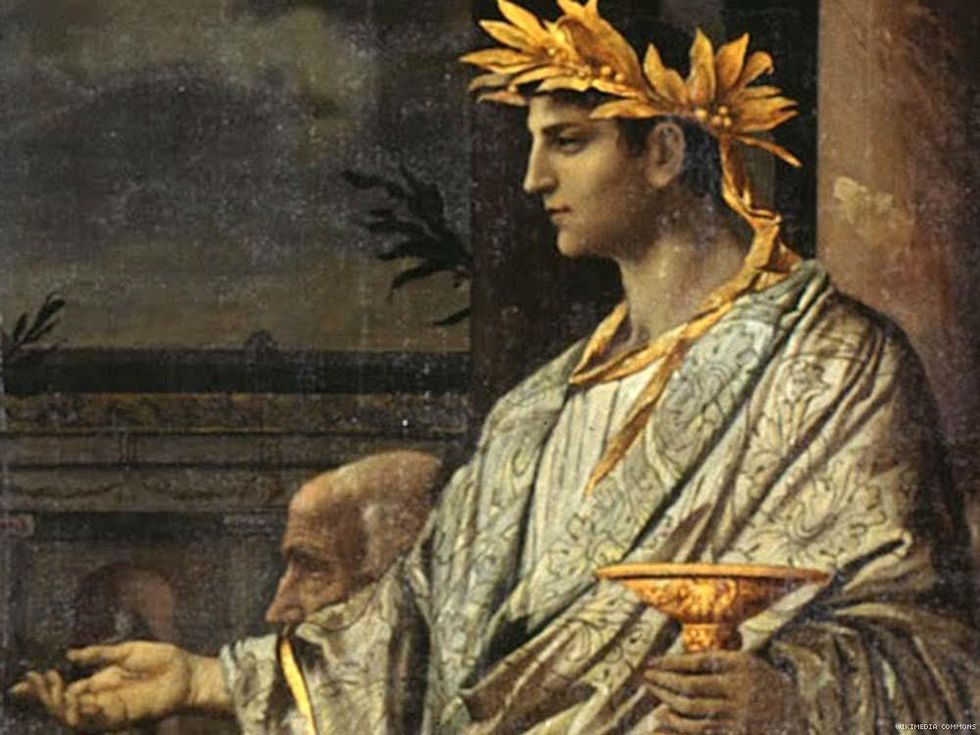 15. Agathan and Pausanias
15. Agathan and Pausanias


































